Subway tunneling to begin in downtown L.A.
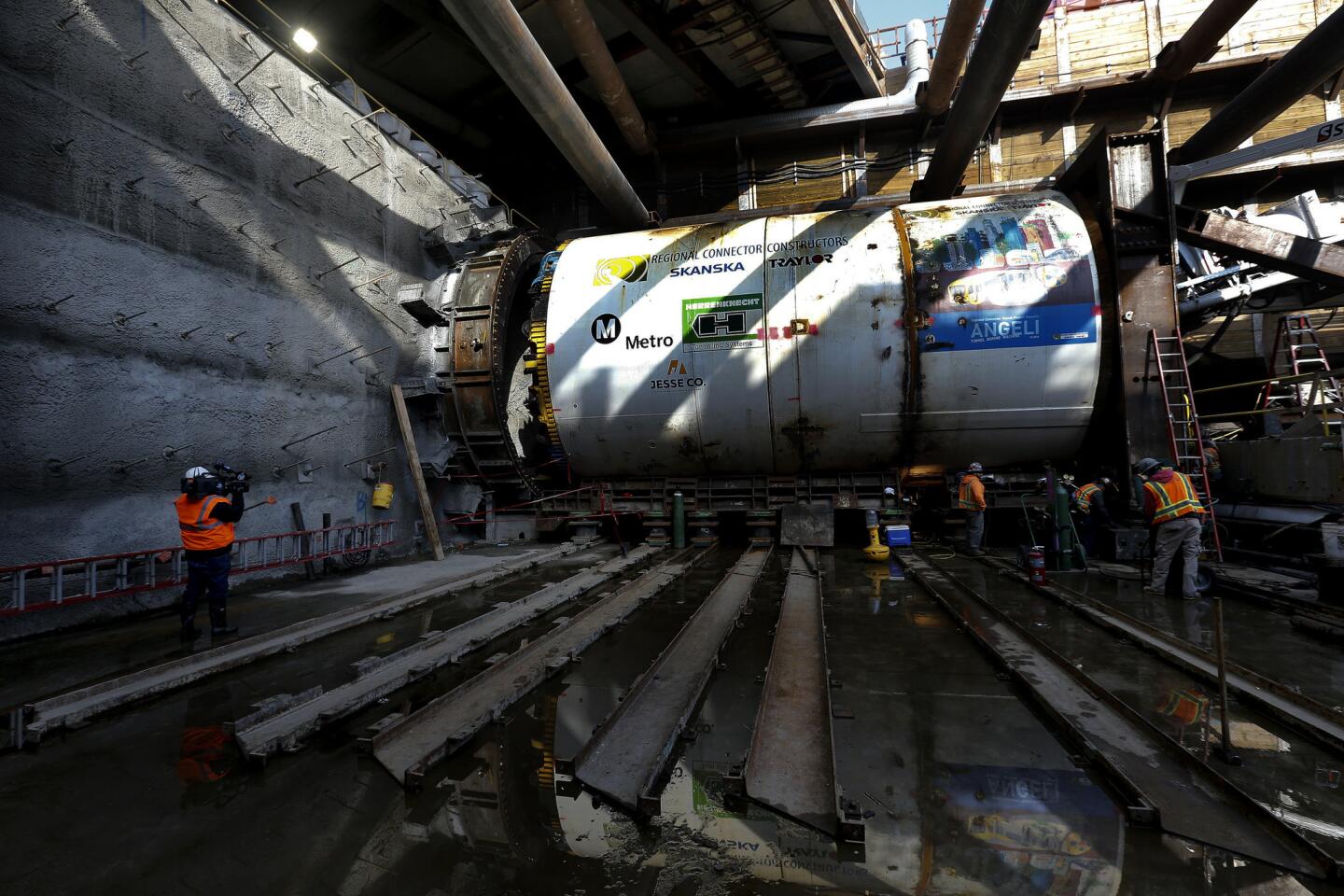
The front section of “Angeli,” the name given to the 400-foot-long, 1,000-ton German boring machine that will dig twin tunnels between Little Tokyo and the Financial District in downtown Los Angeles. (Mel Melcon / Los Angeles Times)
Metro’s Regional Connector will add three new train stations in downtown Los Angeles: at 1st Street and Central Avenue, 2nd Street and Broadway, and 2nd and Hope streets.
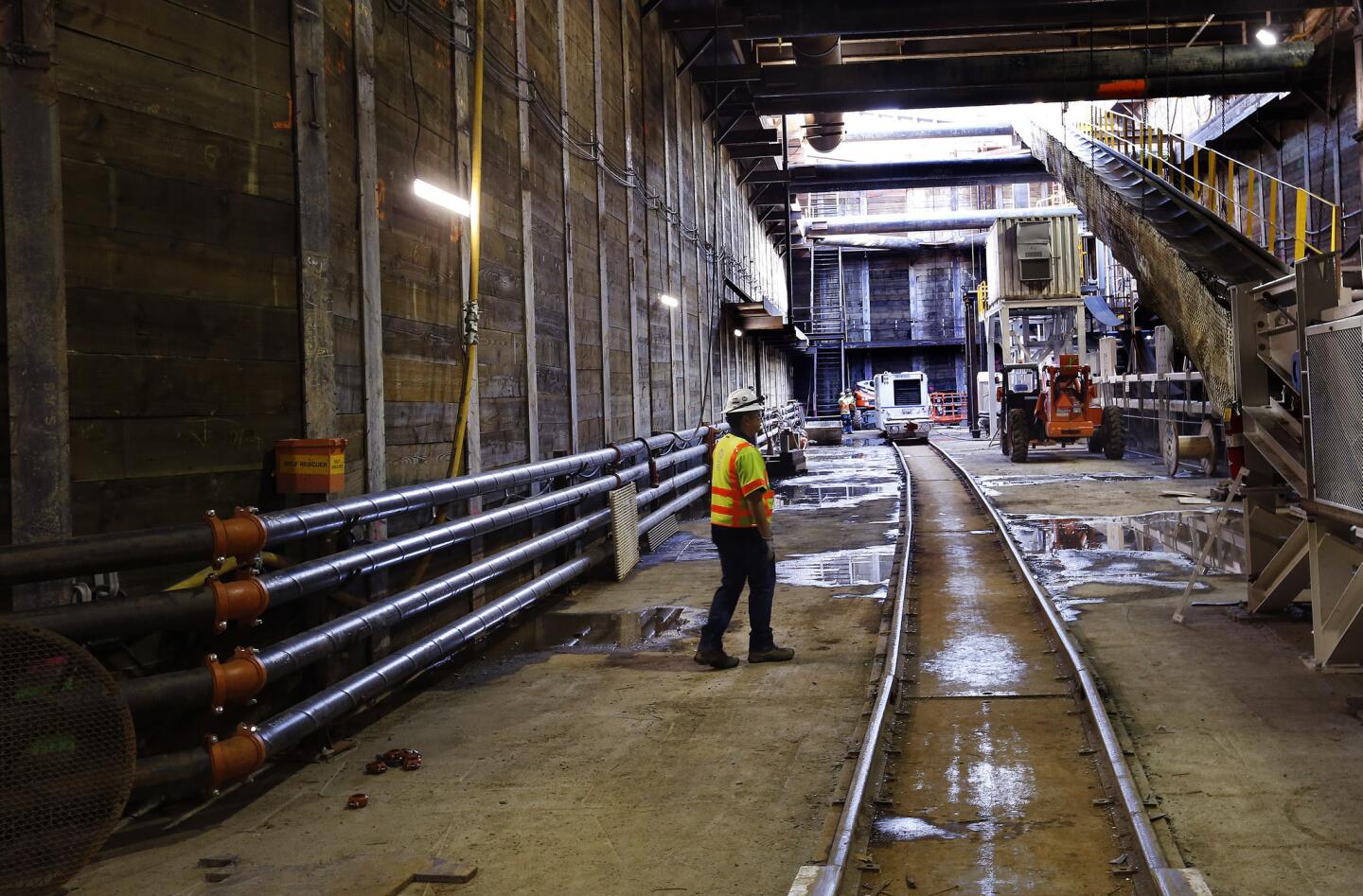
The Downtown Rgional Connector is seen as an essential piece in the county’s rapidly growing rail system. Twin subway tunnels will tie together the Blue, Expo and Gold lines, allowing passengers to ride from Santa Monica to East Los Angeles, and from Azusa to Long Beach, without changing trains.
(Mel Melcon / Los Angeles Times)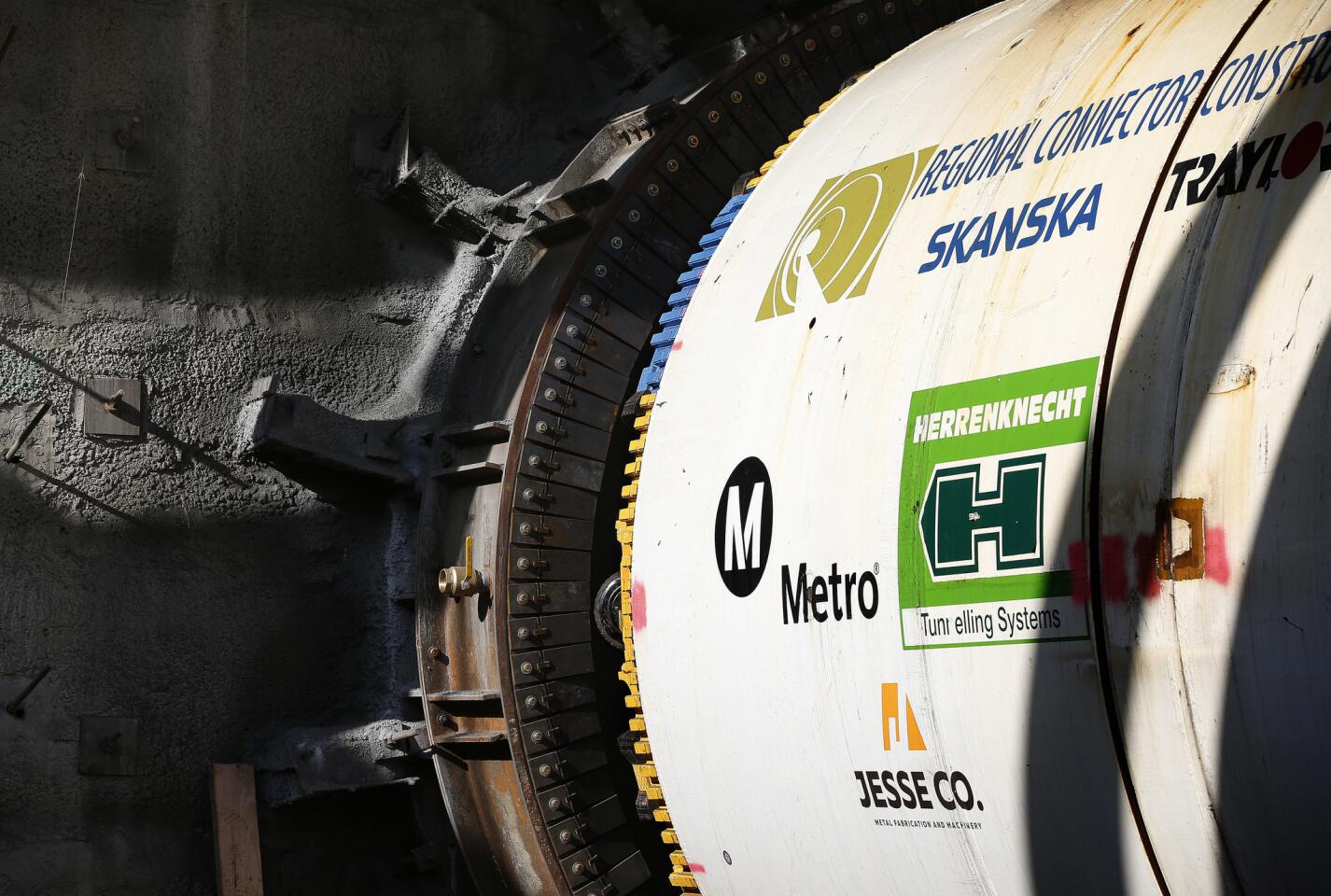
The front section of “Angeli, which will begin churning westward later this month at the pace of 4 inches a minute, or 65 to 75 feet a day, digging twin 1.1-mile tunnels.
(Mel Melcon / Los Angeles Times)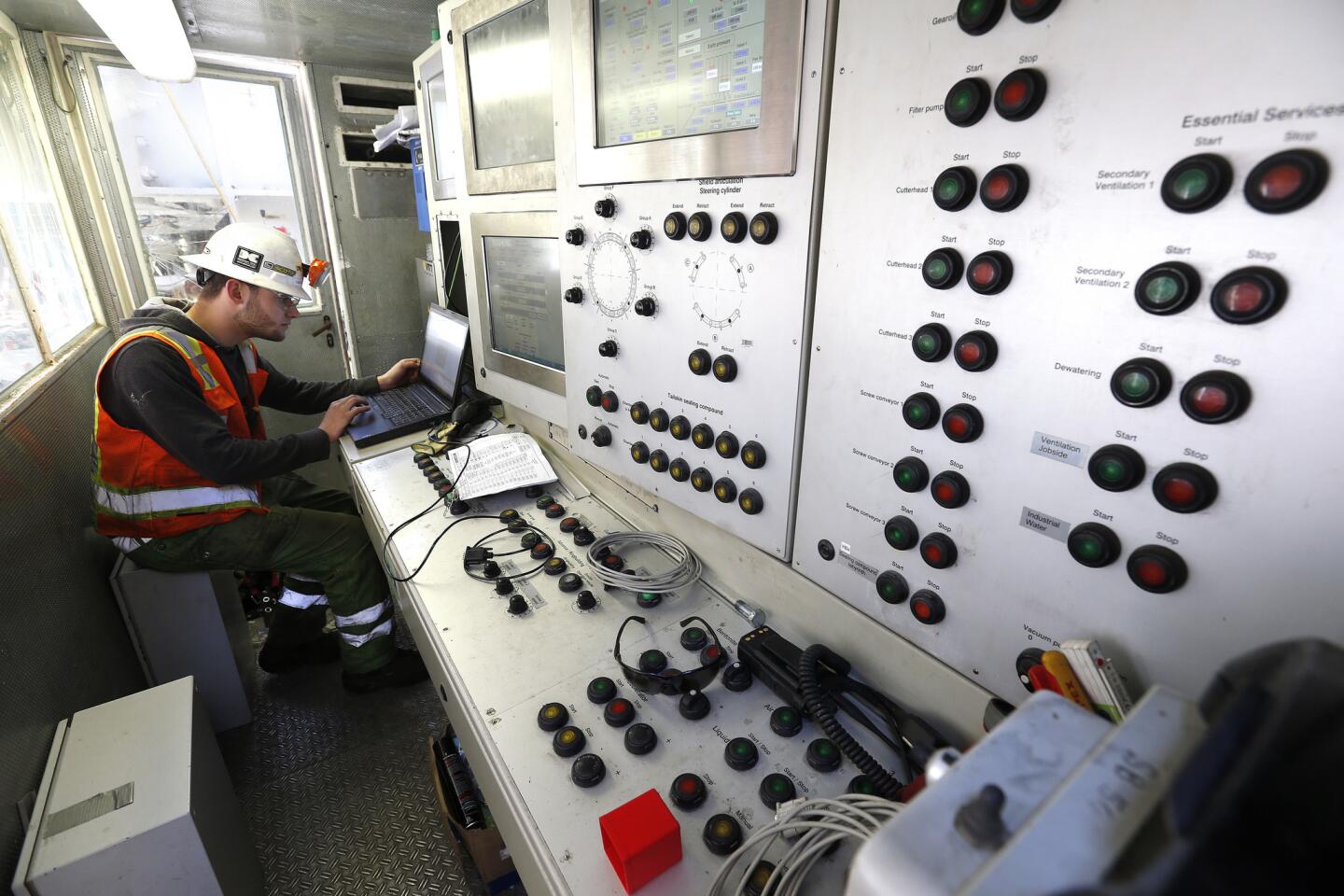
Service electrician Sebastian Hartmann works inside the main control room of the tunnel-boring machine.
(Mel Melcon / Los Angeles Times)Advertisement
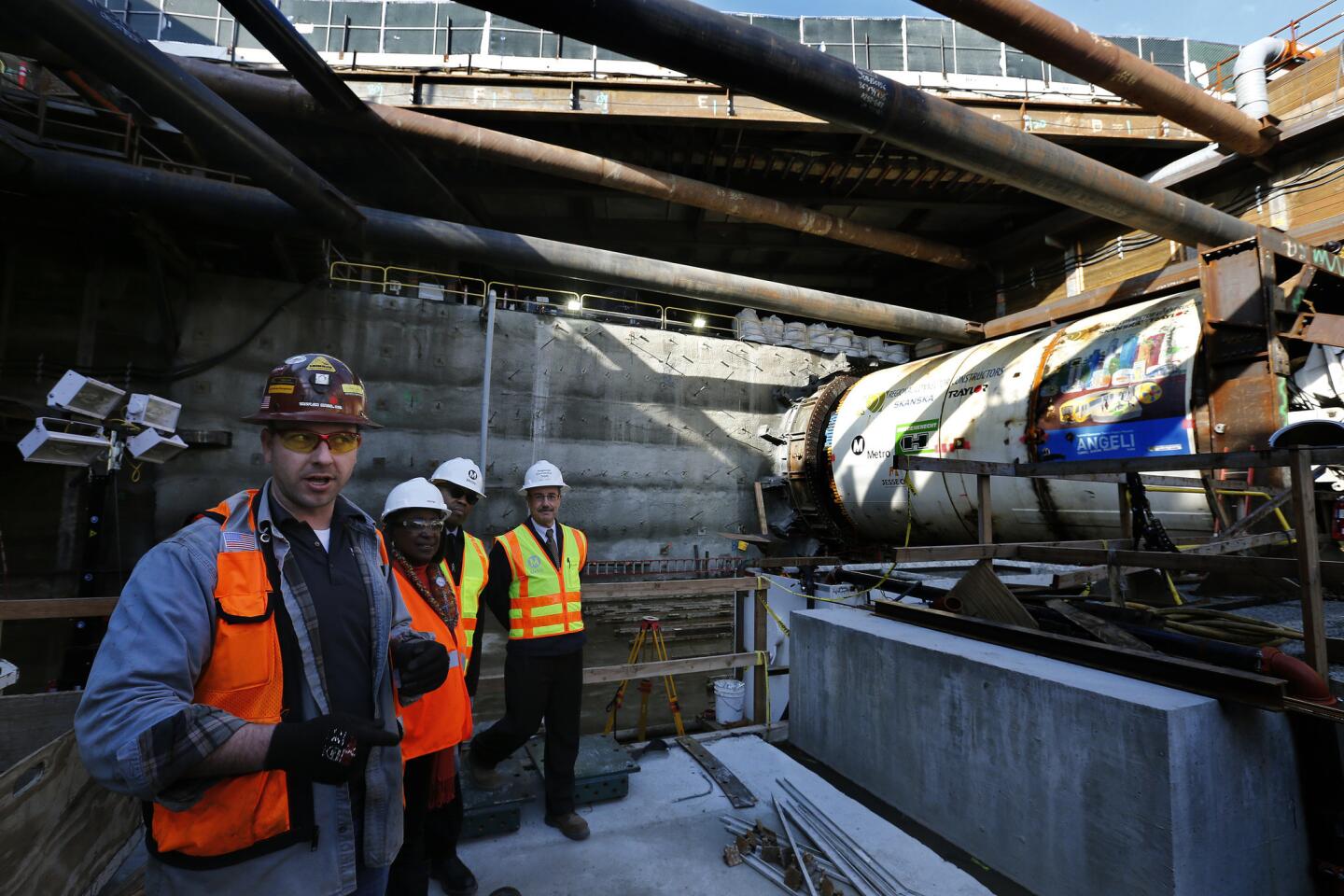
Richard McLane, left, chief mechanical engineer for Traylor Bros. Inc., addresses the media during a tour of “Angeli,” seen in the background.
(Mel Melcon / Los Angeles Times)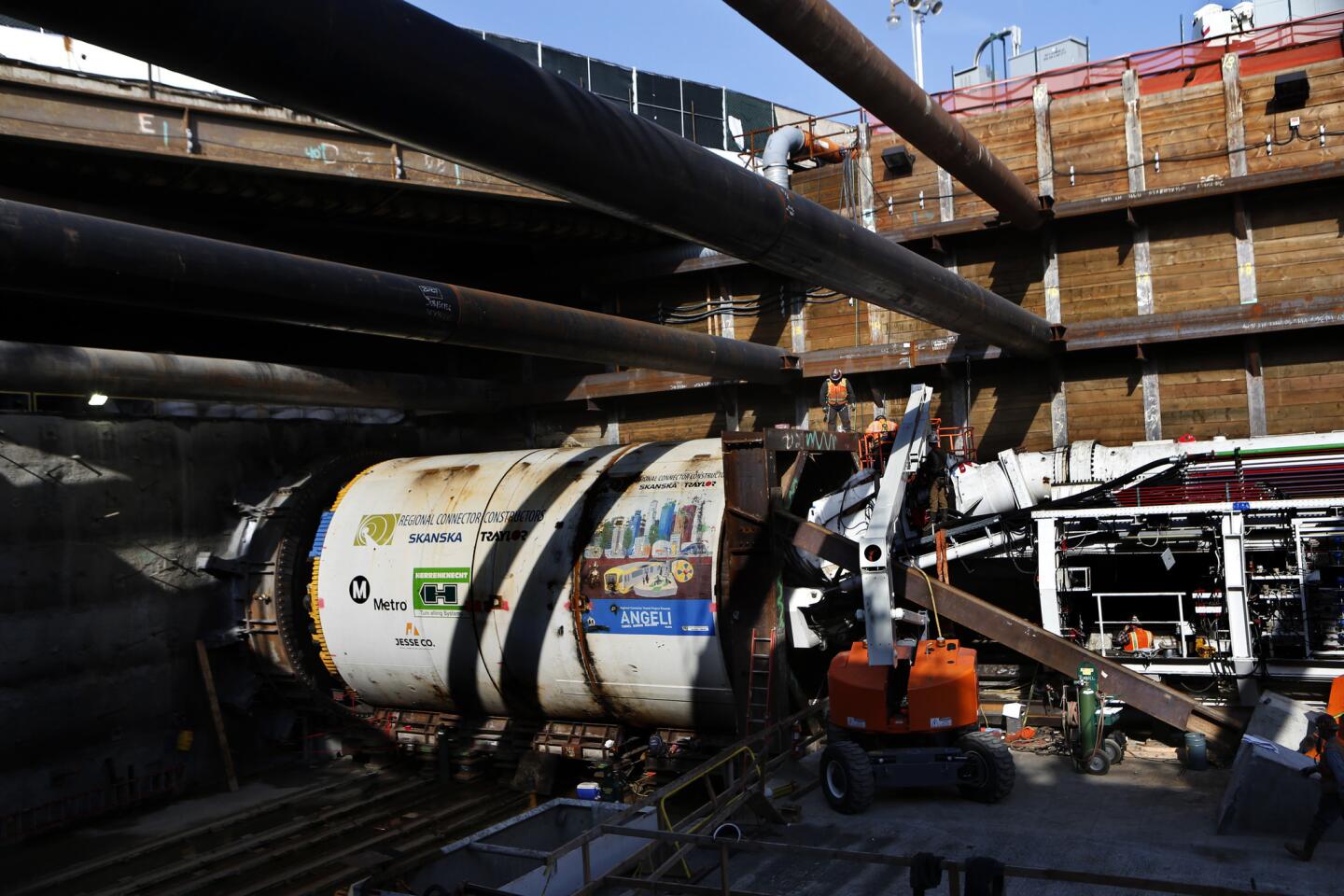
Before digging could begin, crews spent months relocating utility pipes and lines. State records describing their location and condition were “inadequate.” Crews discovered decades-old water lines and electrical equipment, sometimes badly deteriorated.
Tunneling is set to begin on the Regional Connector 1st and Central Station construction site in downtown Los Angeles.
(Mel Melcon / Los Angeles Times)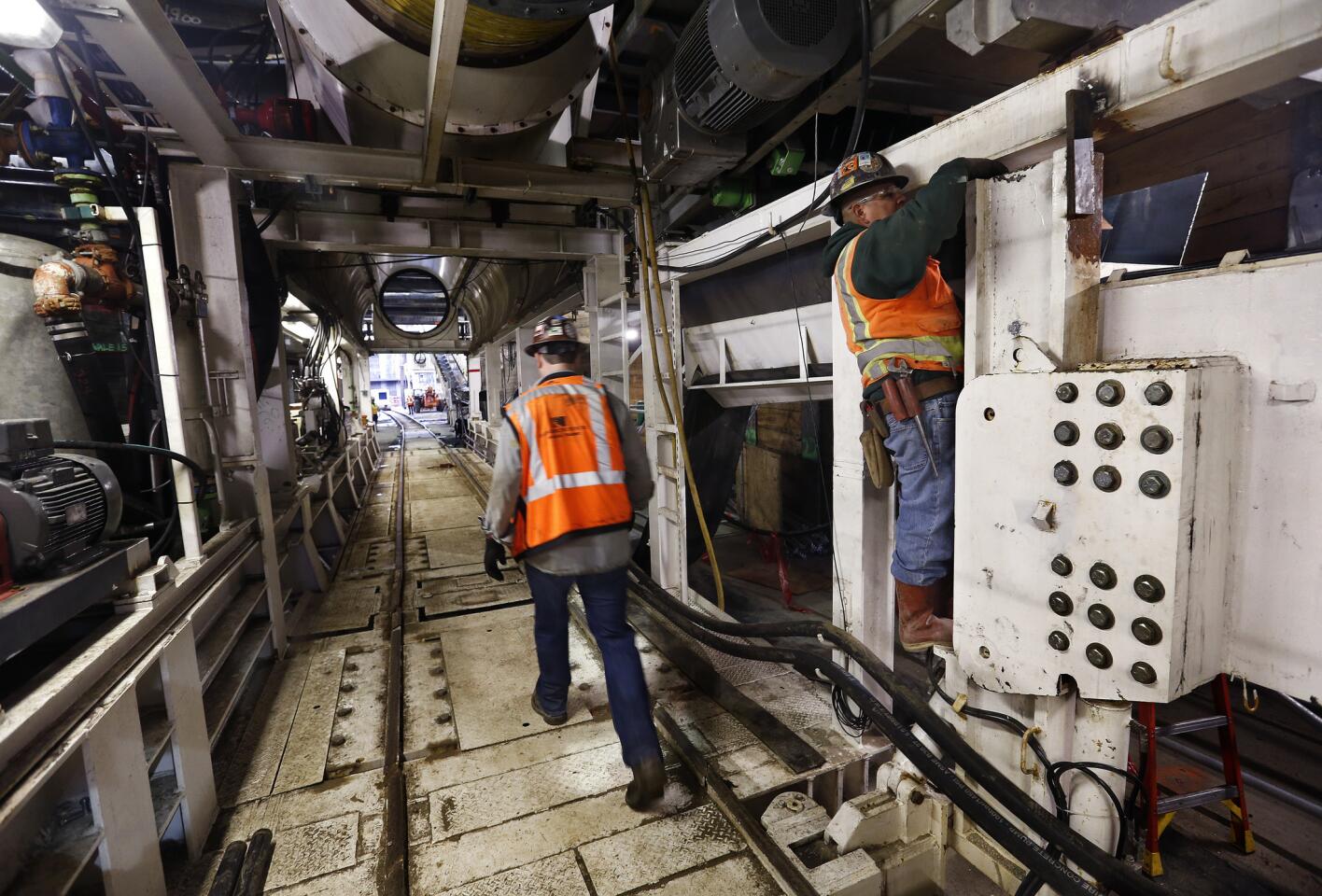
David Zavala, right, fixes a conveyor belt cover while working inside the gantry of the tunnel-boring machine “Angeli.”
(Mel Melcon / Los Angeles Times)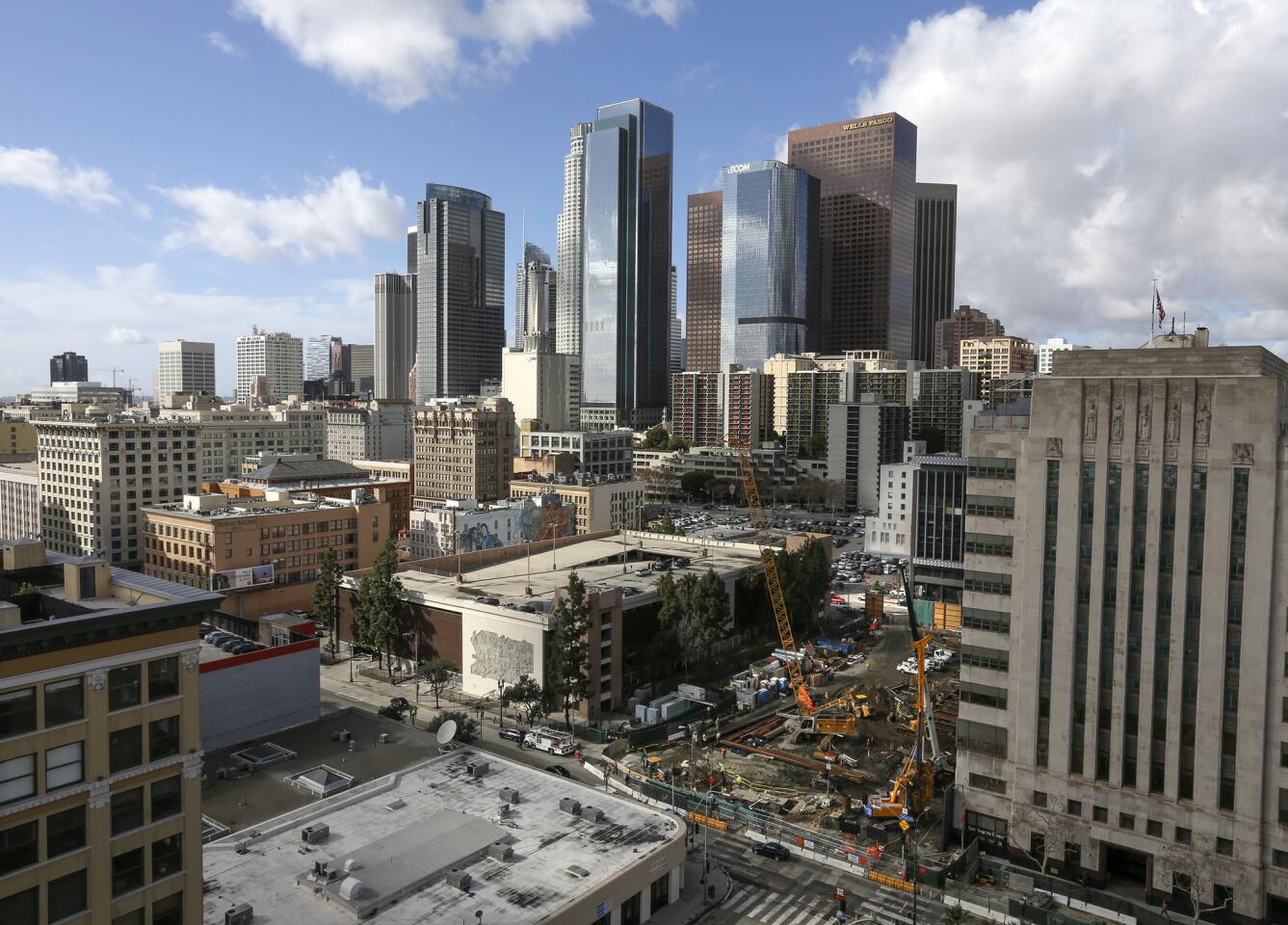
The 2nd Street and Broadway regional connector station under construction in downtown Los Angeles.
(Mark Boster / Los Angeles Times)Advertisement
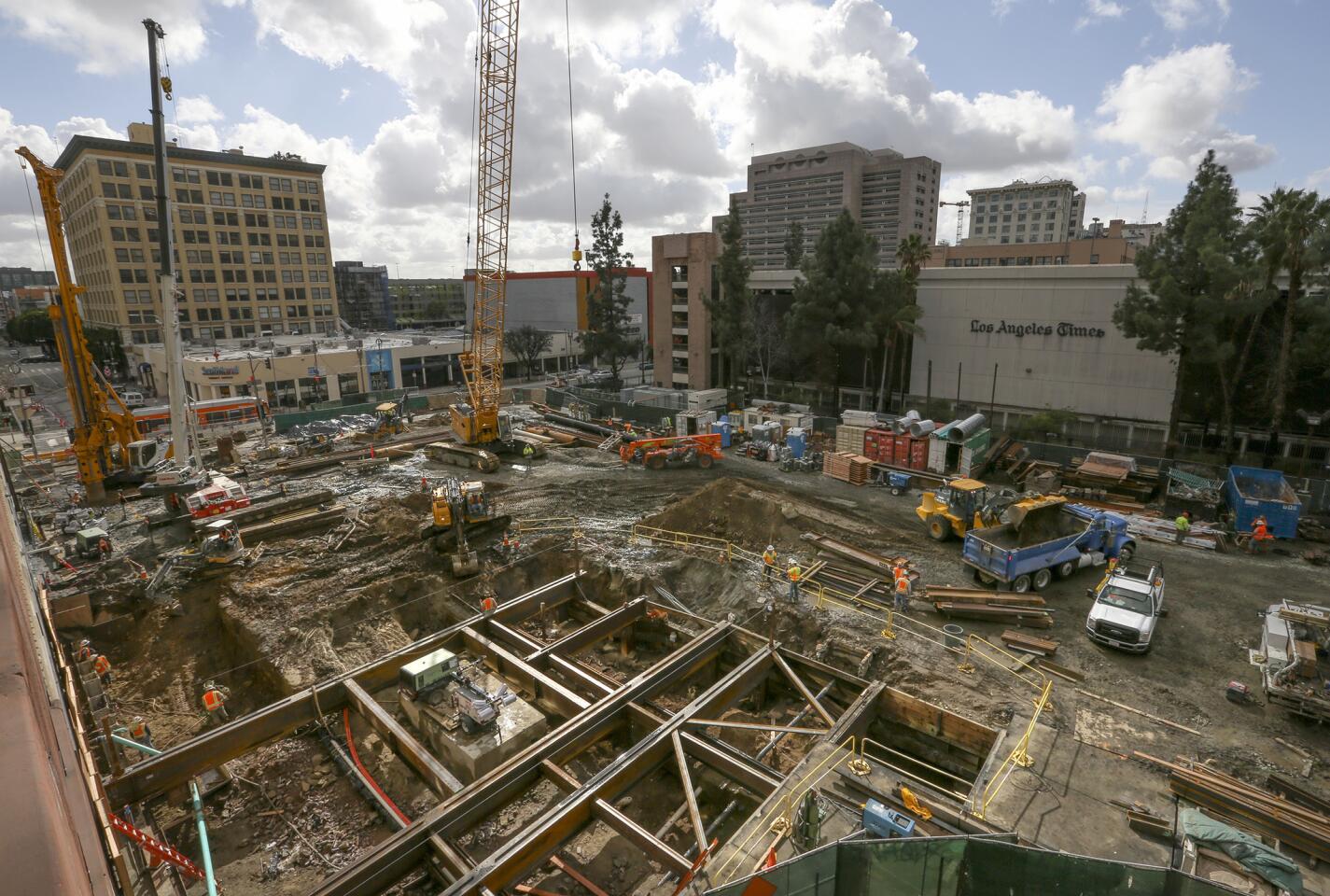
Construction at 2nd Street and Broadway. “In a concentrated urban center where people have been living for more than 100 years, you start to find things that you didn’t know were there,” said Tim Taylor, an associate professor at the University of Kentucky who specializes in construction management.
(Mark Boster / Los Angeles Times)






